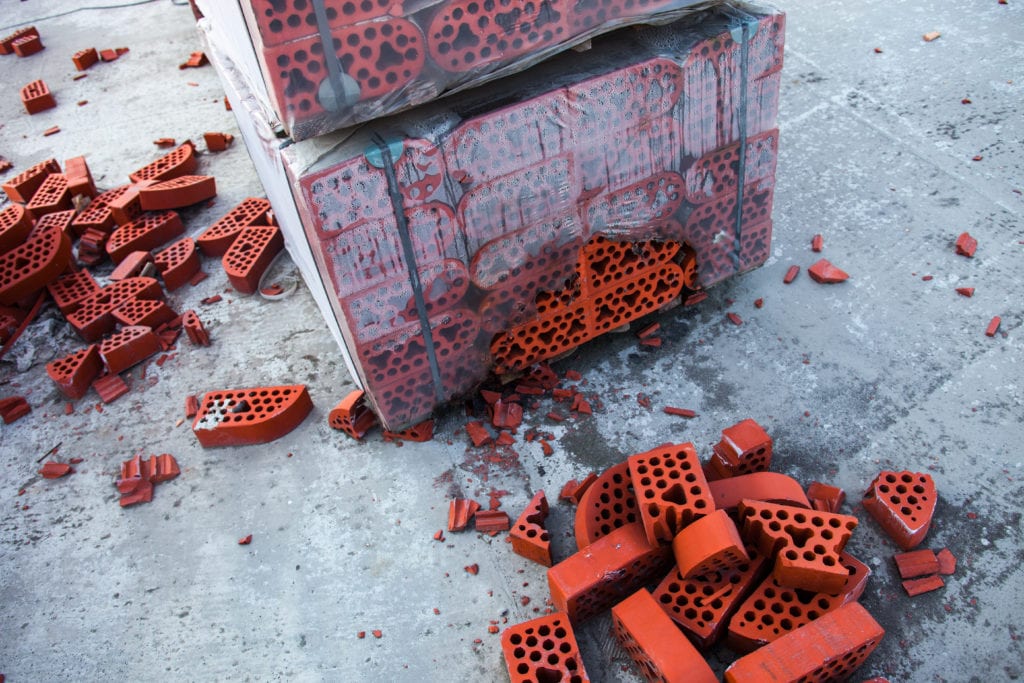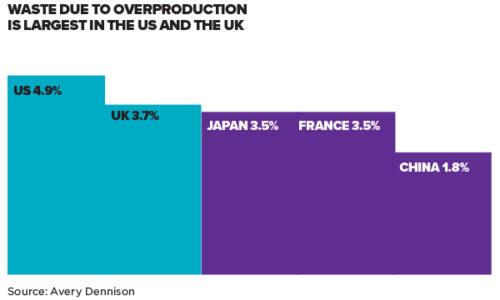Waste Eats Away the Bottom Line

Overproduction and waste may push margins in the wrong direction. A recent Avery Dennison report finds that 8% of stock perishes or is discarded before it reaches consumers–inventory losses worth up to $163.1 billion or 3.6% of annual profits. Of the 8% waste, slightly more than half (53.8%) is lost in the supply chain before products reach store shelves.
The report, The Missing Billions: The Real Cost of Supply Chain Waste, examines data from 318 companies and centers on issues of waste in supply chains in the United States, the UK, France, China, and Japan (see chart). Although the companies surveyed say they are aware of the waste issue, study authors contend that the needed budgeted funds to address the issue are lacking.
 “The current supply chain disruption is leading to a waste crisis, making the case for sustainable practices even more urgent and necessary,” says Francisco Melo, senior vice president and general manager, Avery Dennison Smartrac.
“The current supply chain disruption is leading to a waste crisis, making the case for sustainable practices even more urgent and necessary,” says Francisco Melo, senior vice president and general manager, Avery Dennison Smartrac.
Some companies turn to technology to help implement the measures needed to reduce supply chain waste. For example, 61% of organizations surveyed have deployed tracking solutions at the item level, with another 34.6% exploring options to implement this technology.
Nearly all responding companies are embracing technology: 97% plan to invest in blockchain applications for the supply chain, 99% plan to increase smart device usage, and 97% say they will use industrial IoT, all within five years,
The report also surveys consumers and finds their main concerns are cost and quality. But consumers do show interest in the journey taken by the products they purchase. For example, more than half of consumers (52%) agree that “transparency about a product’s journey to the consumer is important to me” and they are “being more transparent about materials/ingredients used” when buying clothing.
